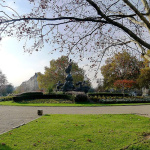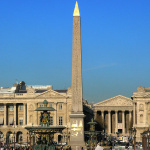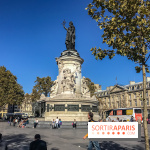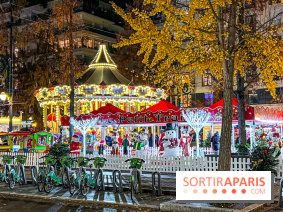For many years, the routes of authorized demonstrations have always been the same, in the triangle from Place de la République to Place de la Bastille, or Nation, and vice-versa. But why do these symbolically-named squares keep cropping up? Precisely because their names recall major elements ofFrench history, and so are not chosen at random. If nation evokes a certain unity and republic, a hard-won political system, it's of course the Bastille that is the most significant, on the site of the former fortress, where the Colonne de Juillet sits as a reminder of past revolutions.
This itinerary took shape between 1840 and 1900, covering just over four kilometers. The Grand Boulevards make it easy to gather, with subways where several lines meet. It's also a very convenient route for the police, who can easily secure the area, well away from the places of power such as the Élysée, Matignon or the National Assembly. This is not the case at Place de la Concorde, where the spontaneous demonstrations of recent days took place after the government's 49.3 law.
The Prefecture de Police has banned all gatherings there since Saturday March 18. Demonstrations on the square have been rare in recent decades, due to the memory of February 6, 1934, when clashes between the Republican Guard and far-right militants left 37 people dead.



 History of the Place de la Bastille
History of the Place de la Bastille
A symbol of the French Revolution, the Place de la Bastille has had an eventful history. It was here that the famous Bastille Prison stood, destroyed stone by stone during the Revolution. At its center, the beautiful Colonne de Juillet and its golden Génie de la Liberté can be seen from a great distance. [Read more]



 History of the Place de la Nation
History of the Place de la Nation
Originally erected in honor of the marriage of Louis XIV and Marie-Thérèse of Austria, the Place de la Nation became the site of countless public executions under the guillotine during the French Revolution. In 2019, the Place de la Nation will take on yet another new look, with a plan by Paris City Hall to green the entire square and reduce car traffic. [Read more]



 History of the Place de la Concorde
History of the Place de la Concorde
The Place de la Concorde is the capital's largest square. It was here, at the start of the Champs-Elysées, that Louis XVI and Marie-Antoinette were guillotined. Today, it is one of the most famous squares in Paris, and its famous golden-tipped obelisk still dominates the city. [Read more]



 History of Place de la République
History of Place de la République
The Place de la République underwent many architectural and artistic changes before taking on the appearance you know today. Here's a look back at the history of this great historic square. [Read more]















